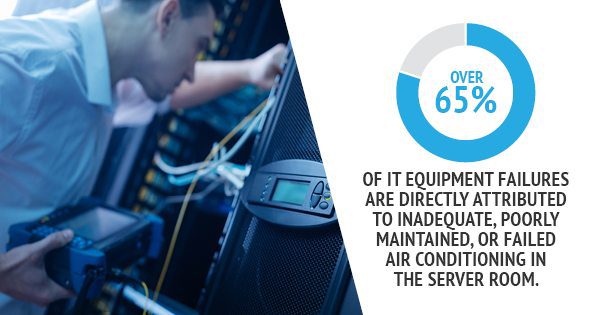 The power density of a data center is 100 times more than that of a large commercial office building and is equivalent to nine small sized shopping malls of Wal-Mart size. That’s just one reason why it’s important to be aware of the knowledge required to operate data centers. Between IT racks, server racks, and data racks, these complex systems can certainly seem overwhelming. Here are some answers to common questions about server racks.
The power density of a data center is 100 times more than that of a large commercial office building and is equivalent to nine small sized shopping malls of Wal-Mart size. That’s just one reason why it’s important to be aware of the knowledge required to operate data centers. Between IT racks, server racks, and data racks, these complex systems can certainly seem overwhelming. Here are some answers to common questions about server racks.
- What is a ‘rack unit’?
A rack unit is the designated unit of measurement used when describing or quantifying the vertical space you have available in any equipment rack. One unit is equal to 1.75 inches, or 4.45 centimeters. Any equipment that has the ability to be mounted onto a rack is generally designed in a standard size to fit into many different server rack heights. It’s actually been standardized by the Electronic Industries Alliance (EIA). The most common heights are between 8U to 50U, but customization is also a viable option if you’re working with nonstandard sizes. - Are there any specific ventilation requirements with server racks?
Over 65% of IT equipment failures are directly attributed to inadequate, poorly maintained, or failed air conditioning in the server room. So yes, proper ventilation is a critical part of maintaining any data center. Some cabinet manufacturers construct side panel ventilation instead of front and back ventilation, but experts say it’s inadequate for rack mount servers. This can be especially dangerous if more than one cabinet is being set up at once. The importance of proper ventilation should not be taken lightly, and you should always opt for front to back ventilation except in network applications where the IT equipment exhausts out the side. - What is meant by ‘server rack depth’?
Server rack depth is a critical aspect of the ventilation process. Connectworld.net says, “Server cabinet depth is important not only because it has to allow room for the depth of the particular equipment to be rack-mounted (deep servers vs. routers or switches), but also it has to allow sufficient room for cables, PDU’s as well as airflow.
Ultimately, knowing these specifics about server racks is critical when working in a data center setting. For more information about IT racks, contact AMCO Enclosures.
